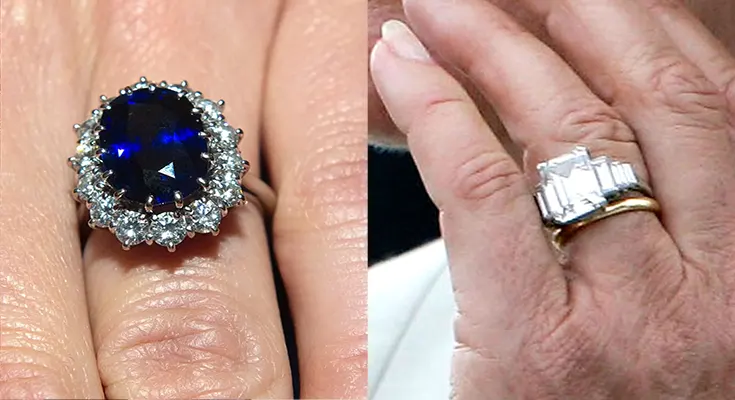Engagement rings have long been cherished symbols of love and commitment, but in the context of Russian royalty, they carry a weight of history and significance that transcends mere adornment. The allure of Russian royal engagement rings lies in their intricate designs, exquisite craftsmanship, and the stories they tell about the dynasties and individuals who wore them. These rings are not just beautiful pieces of jewelry; they encapsulate the legacies of a rich cultural heritage and the often tumultuous history of the Russian Empire.
One of the most famous engagement rings in Russian history belonged to Empress Alexandra, wife of Tsar Nicholas II. The ring, a stunning creation featuring a large diamond surrounded by smaller diamonds, symbolized both love and the burdens of monarchy. It was said to reflect Alexandra’s personality—elegant yet resilient. This ring became a poignant reminder of the couple’s devotion during a time of great political upheaval, ultimately marking the beginning of their shared journey as the last imperial family of Russia.
Another remarkable piece is the engagement ring of Grand Duchess Maria Pavlovna, who married Prince Ernst August of Hanover. Her ring was notable for its exquisite emerald centerpiece, surrounded by diamonds. The choice of emerald, known for its association with rebirth and renewal, was particularly significant, as it mirrored Maria’s own journey from her Russian roots to her new life in Germany. The ring not only represented her betrothal but also the enduring ties between the Russian and German royal families, showcasing how love and political alliances were often intertwined.
The legacy of Russian royal engagement rings also includes the stunning piece worn by Grand Duchess Anastasia Nikolaevna. While her engagement was more informal compared to other royals, the love story behind her ring—an elegant band with a simple diamond—spoke volumes. This ring, though modest by royal standards, captured the essence of Anastasia’s spirit and her dreams of a life filled with love and adventure. Even after the fall of the Romanovs, the story of her engagement ring lived on, becoming a symbol of hope and resilience amidst tragedy.
Additionally, the engagement ring of Princess Maria Nikolaevna, daughter of Tsar Nicholas II, showcases the artistic craftsmanship that characterized Russian royal jewelry. This ring featured a beautiful diamond surrounded by a floral motif of smaller stones, representing both her youthful spirit and her royal lineage. Maria’s engagement, much like those of her siblings, was filled with the pressures of duty and expectation. Yet, her ring remains a cherished artifact that connects modern admirers to the glamour and complexities of royal life in early 20th-century Russia.
Throughout history, these engagement rings have not only marked personal commitments but also served as symbols of national identity and pride. They reflect the artistic styles of their times, often combining influences from across Europe with distinct Russian motifs. The opulence of these rings also underscores the wealth and power of the imperial family, showcasing the skills of the artisans who crafted them.
In contemporary times, the fascination with Russian royal engagement rings endures. Many modern couples seek to emulate the elegance and sentiment of these historical pieces, drawing inspiration from the past while incorporating their unique narratives. As we celebrate the beauty of these rings, we also honor the legacy of the families who wore them, reminding us that love, in its many forms, is a timeless and universal pursuit.
In conclusion, the enduring beauty of Russian royal engagement rings is a testament to the rich history and cultural significance they embody. These rings serve not only as exquisite jewelry but also as powerful symbols of love, commitment, and the legacies that continue to inspire generations. As we look back on the stories behind these magnificent pieces, we are reminded of the intricate interplay between personal affection and the larger forces of history that shape our world.


